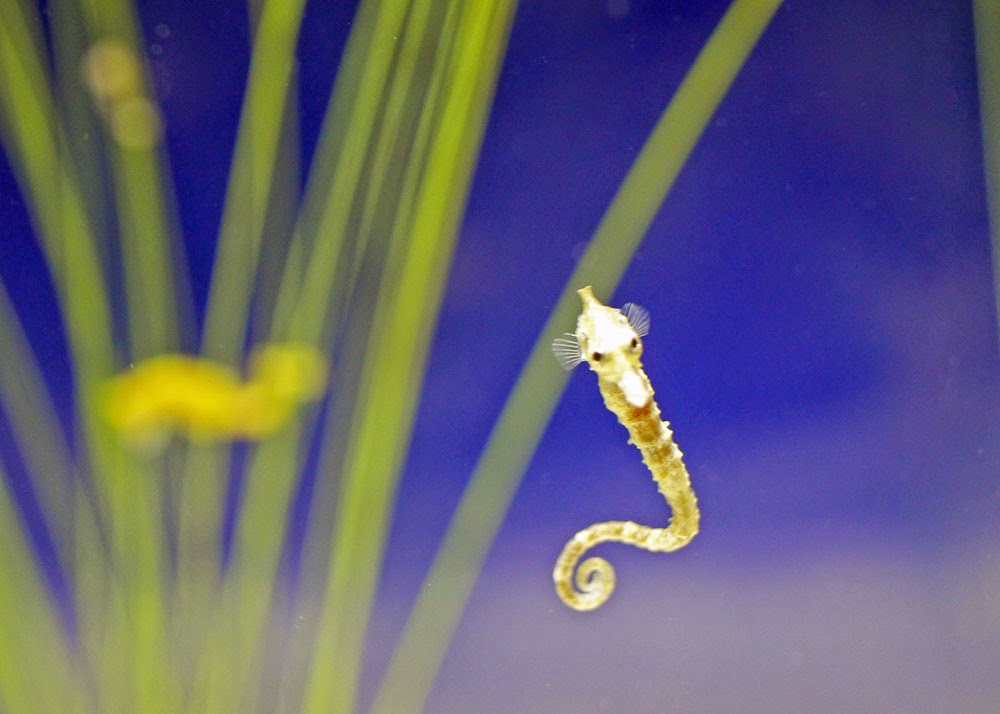Atlantic sea nettles are predatory sea jellies of the phylum Cnidaria, and the class Scyphozoa.
 |
| Atlantic sea nettle (Chrysaora quinquecirrha) |
Atlantic nettles can be found throughout the western Atlantic Ocean, from southern New England to Brazil. These jellies have a potent sting, and are responsible for numerous uncomfortable stings to swimmers during the summer months.
The long, trailing tentacles of Atlantic sea nettles, like those of all cnidarians, are studded with stinging cells called nematocysts. These tentacles possess a potent sting, and are used to capture ctenophores, jellies and other zooplankton from the water column. Jellies are indiscriminate feeders, their tentacles stinging nearly anything organic they come into contact with, which unfortunately includes humans.
 |
| Nematocyst cells from an Atlantic sea nettle cover every inch of its tentacles. Microscopy reveals these lethal cells, coiled and waiting to fire their hollow harpoon-like threads. |
A combination of chemoreceptors and mechanoreceptors control the firing mechanism for the nematocyst. When the right combination of stimuli exist, the nematocysts fire, sending microscopic hollow harpoons into their prey. After penetration, the toxic contents of the nematocyst are delivered to the target through these hollow threads.
 |
| A discharged nematocyst from an Atlantic sea nettle has penetrated tissue. Its hollow thread will deliver powerful toxins to the jelly’s prey. |
The venom of jellies contains a cocktail of potent compounds, including proteinaceous porins, neurotoxic peptides, bioactive lipids and other small molecules. This venom stuns or kills small prey, allowing the jelly to digest the incapacitated prey. Porins in jelly venom are largely responsible for the potency of the sting on humans. Porins are a cellular membrane pore-forming toxin, and in jelly venom are fast-acting. These proteins will indiscriminately punch holes in whatever cells they come into contact with, including blood, skin and nerve cells. In humans this results in pain, redness or blistering.
In the case of extremely potent jellies, such as the Australian box jelly (Chironex fleckeri), the high levels of porins in the venom create tiny holes or pores in the red blood cells. Potassium leaks from the ruptured cells and into the bloodstream. Potassium is an electrolyte which plays an important role in keeping the heart beating at a normal rhythm. Typically, potassium levels are held in check by our kidneys, but they cannot manage the massive influx of potassium from the rapidly rupturing cells. When the plasma potassium concentration gets too high it disrupts the electromotive force and the heart cannot beat, resulting in cardiac arrest.
While the sting of an Atlantic nettle is unpleasant, it is only life threatening in the case of an allergic reaction. “I’ve Been Stung: What Should I Do?” by Paul S. Auerbach, M.D., M.S., is an excellent resource for the treatment of marine animal injuries, including those by jelly stings.
 |
| Brine shrimp have fallen prey to the ephrya of an Atlantic sea nettle. Their digesting bodies can be seen through the transparent body of the nettle. |
The life cycle and early stages of Atlantic sea nettles are remarkably similar to their cousins, moon jellies (read more about it here). The major difference being the eggs and sperm of the medusoid adults are left to the currents to find one another, rather than ingested and brooded by the female.
Special thanks to NEAq Senior Aquarist Eric Payne for assistance with microscopy.











